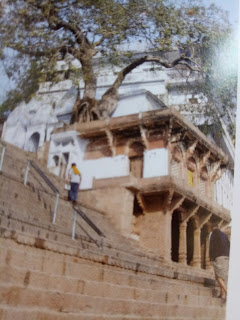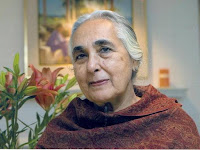Discovering Tulsidas in Tulsi Ghat

Tulsidas Ashram at Tulsi Ghat It is five pm and I find myself back on the banks of the river Ganga in Varanasi, as it flows so quietly that it almost appears still. I am on my way to locate a 400 year old house where the Ramcharitmanas was written in Tulsi Ghat, one among the famed ghats of Varanasi. Tulsi Ghat is slightly higher than the rest and a steep staircase, three Shiva shrines, an old peepal tree and a white colour tree with a large balcony mark Tulsi Ghat. A fairly aggressive greets me with aggression as it jumps from the peepal tree. I become defensive and allows me to pass. In Tulsi Ghat, I spot the guesthouse of the Sankatmochan Foundation and the laboratory of the Swachh Ganga Foundation, which spearheads the cleanup of the river Ganga in Varanasi. For a house that is 400 years old, one would expect it to be fairly well-known. I ask for directions to the Tulsi Ashram and a man indicates the house with his index finger right across the street opposite the akhar...



